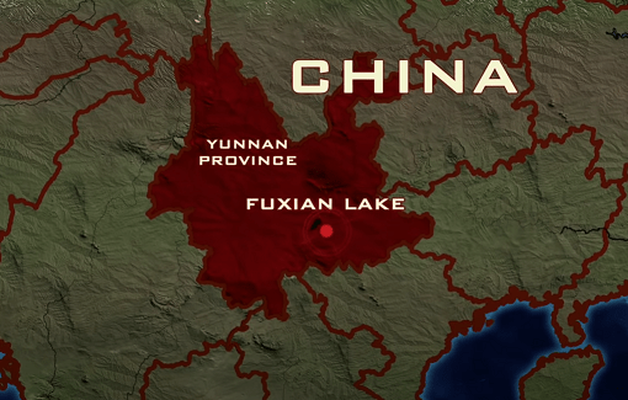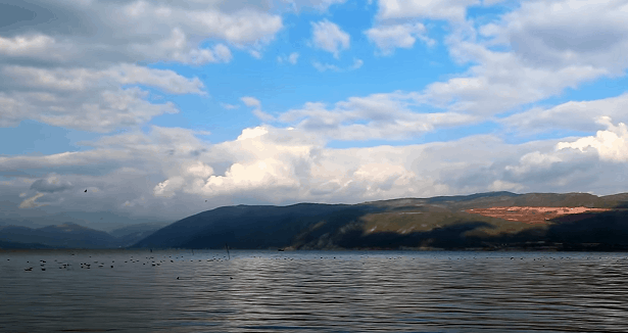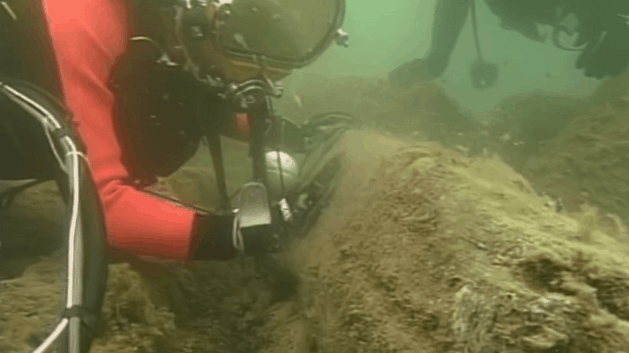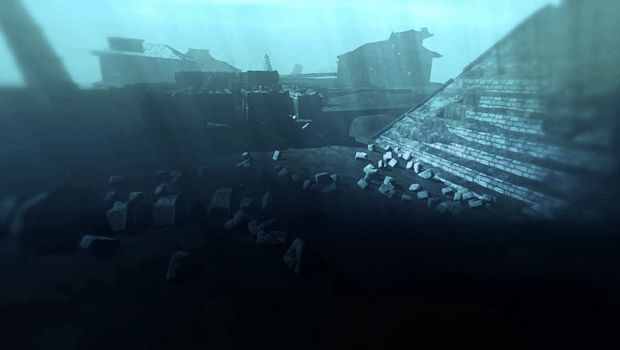|
The ongoing research into ancient discoveries never ceases to amaze archaeologists who strive to unravel the mysteries of past civilizations on Earth. One of the most fascinating finds is the presence of pyramid structures that span across different cultures and locations around the world. In addition to these impressive structures, numerous underwater artifacts have been discovered since the 20th century, including lost cities and pyramids. In 1992, a skilled diver named Geng Wei from China made a remarkable discovery at the bottom of Fuxian Lake in the Yunnan Province. While exploring the depths, Geng stumbled upon handcrafted flagstones and stone strips that ultimately led him to uncover a vast pyramid and a sunken city belonging to the ancient Yunnan civilization during the Han dynasty (206 BCE-220 CE). Covering an area of 212 square kilometers and spanning through Chenjiang, Jianchuan, and Huaning Counties in Yunnan Province, Fuxian Lake is the deepest lake in the region with a depth of 155 meters. Moreover, it ranks as the third deepest freshwater lake in China. Geng was intrigued by the local legends about a lake that purportedly revealed the impression of a submerged city when viewed from the mountains. Determined to confirm its existence, he undertook 35 diving expeditions to explore the depths of the lake. Upon his extensive survey, he summoned experts from Yunnan Province to validate his findings. Giorgio A. Tsoukalos, a prominent proponent of the ancient astronaut theory, was astounded by Geng’s discovery. He described it as an extraordinary sight, with limestone structures, roads, and buildings evocative of an underwater city. This was the most vivid evidence of dwellings at the bottom of a lake, which were constructed long before the last ice age when there was no water body. During the early 2000s, a team of Chinese submarine archaeologists investigated the site under Fuxian Lake and ascertained the presence of two massive structures. The structures were built on substantial stone slabs, resembling the architectural style of Mayans. One structure was reminiscent of a colosseum, while the other took on a pyramid-like shape with mysterious engravings. The pyramid at the bottom of Fuxian Lake was constructed using massive stone slabs, far surpassing the engineering prowess displayed by the Egyptian pyramids. The Epoch Times reports that a stone carving with a small circle surrounded by seven radial lines resembling the sun has piqued the interest of experts. Another similar circle with only four radial lines is carved on the left side of the stone. This symbol is considered rare and could be over 1,800 years old. The precision and size of the engraved stones suggest that they were installed using specialized equipment and techniques. The top section, made of sandstone, has collapsed over time, but the limestone foundation remains intact. Sonar technology revealed that the submerged city spans an area of 10.8 million square feet, and the pyramid found there could be as ancient as the Egyptian pyramids, possibly even taller. Archeologists discovered that the colossal stone blocks have a bonding composition, similar to cement, which eliminates gaps between them. In addition to the impressive stone structures, Chinese researchers have also discovered handmade artifacts such as clay pots beneath Fuxian Lake. Carbon dating estimates the age of the submerged city to be around 1750 years old, and it is believed to have been constructed by the Dian people who were skilled in metalworking. The Dian kingdom eventually assimilated into the expanding Han dynasty and disappeared by 109 BCE. The lake has also attracted attention from ancient astronaut theorists who suggest that it could be a base for UFOs. According to legend, Fuxian Lake was home to a flying, horse-like creature that could take to the skies. In 1991, a fisherman named Zhang Yuxiang reported seeing a shiny, disk-shaped UFO that caused strong waves in the water. The discovery of the underwater pyramids and city has raised many questions, such as who built the structures, why there is no record of them in ancient Chinese texts, and what happened to the inhabitants. Some even wonder if the city existed before the last ice age.
0 Comments
Your comment will be posted after it is approved.
Leave a Reply. |
News Watch
Mind-opening news articles, editorials, videos & apparel that inspire our readers and help liberate them from the status quo. Stay informed.
Write For UsSpace WatchTop NewsNews Watch Categories
All
|
|
|
HAVE A TIP OR STORY TO TELL? JOIN TODAY & SHARE YOUR STORY!
If you have a breaking news tip or idea, please email: [email protected] Apparently Apparel® is a registered trade name and part of the ZOAT International® brands network. © 2007-2023. All Rights Reserved. Privacy Policy. All art & news content posted on this site is commentary or opinion and is protected under Free Speech. ApparentlyApparel.com is not responsible for content written by contributing artists, authors or news feeds. The information on this site is provided for educational and entertainment purposes only. It is not intended as a substitute for professional advice of any kind. ApparentlyApparel.com assumes no responsibility for the use or misuse of this material.
|
|










